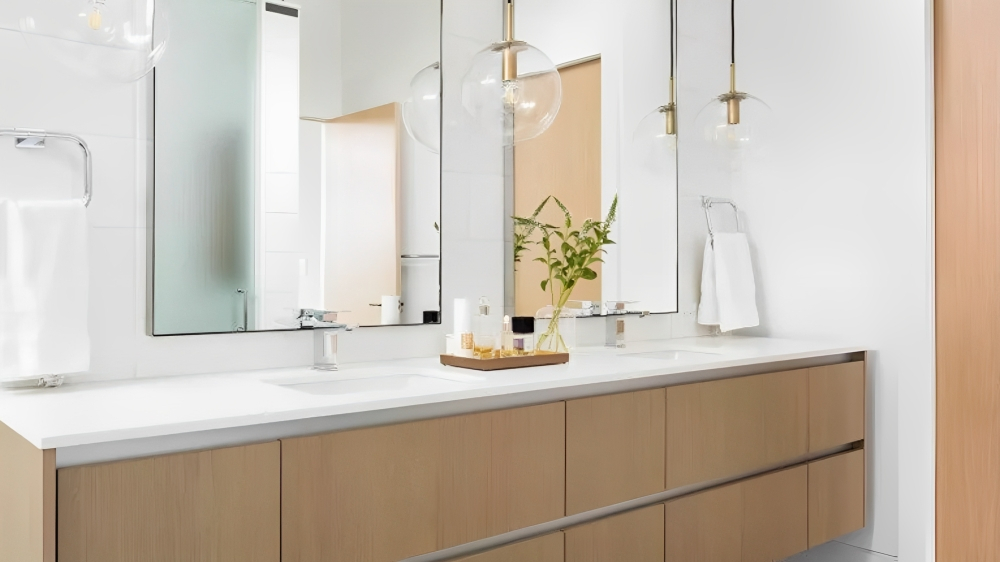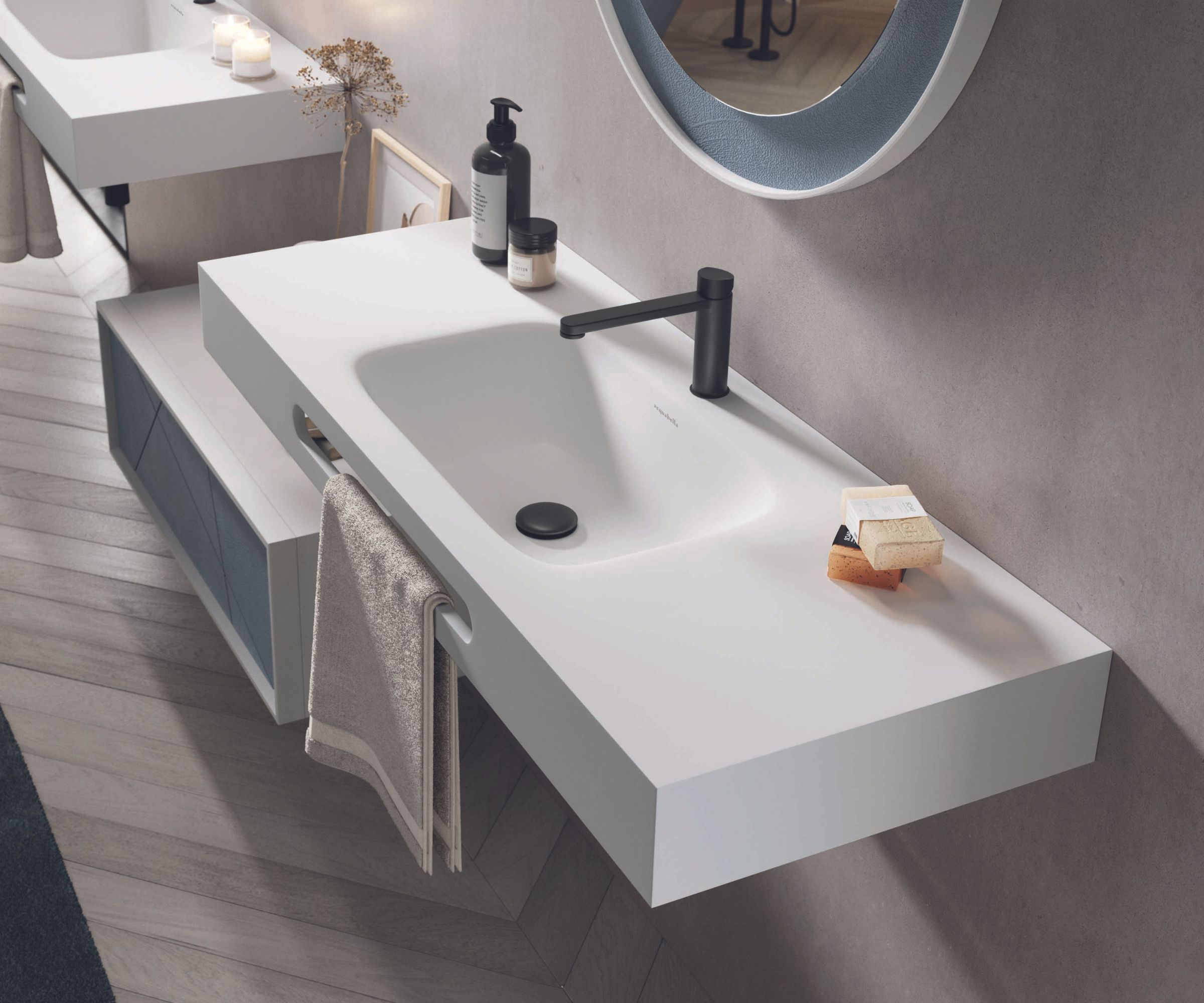
Upgrading a bathroom can be an expensive undertaking and painting can give existing features a new lease of life. But can you paint bathroom countertops?
If you are not a fan of your bathroom countertops, then the good news is that a lick of paint could be the perfect home DIY project to update the space, professional painters say – so long as you paint them correctly. Otherwise, you are risking making them look both tacky and shabby.
Here, the pros share their advice for painting bathroom countertops correctly, including which counters are up to the job, and the best primers for perfect results.
Can you paint bathroom countertops?

Whether or not you can paint your bathroom countertops will depend largely on the bathroom countertop materials you have, begins Andre Kazimierski, professional painter and CEO of Improovy Painters. Stone surfaces like granite or marble are best left alone, while laminate countertops ‘make great candidates for painting,’ he shares.
While you may be able to paint laminate furniture without sanding, laminate countertops need a great deal more preparation before you can apply the first layer of paint – particularly if you want it to stand up to frequent use and splashes of water, adds Jay Sanders, contractor and owner of Castle Dream Construction.
‘Be sure that you have the time to paint your countertops properly – they will need to be sanded and thoroughly cleaned before you can even add your first layer of primer. After that, be aware that you will need at least three coats of paint and a few coats of sealant,’ he advises. It is a good idea to use a cleaner such as sugar soap, available at Amazon, to help remove any grease and residue from the counters without leaving a film after cleaning.
‘In general, it is best to look for moisture-resistant primers and paints since bathrooms tend to be high-humidity areas of the home and paint may peel otherwise,’ continues professional painter, Andre Kazimierski.
The paint itself and the top coat are equally as important as the primer for a lasting finish, continues Hubert Miles, certified master home inspector at Home Inspection Insider – an inspection and home improvement resource.
‘It's important to choose a paint specifically designed for countertops or a multi-surface paint that is durable and water-resistant. Specialist two-part epoxy paint, most typically used for floors, is a popular choice for bathroom countertops as it is durable and long-lasting. A clear topcoat can then help protect the painted surface and improve its durability without ruining the final look of your paint.’
FAQs
What color is best for painted countertops?
When painting countertops it is common for people to pick a neutral shade such as white, or a stone-like shade, for a timeless scheme and to help imitate a desired material or finish. That being said, it is possible to paint your countertops any color you want – from safe grays to bold and bright blues.
How can I resurface my countertops without replacing them?
How you resurface your countertops will depend on the material they are made of and the extent of any damage. It may be that you can lightly sand and reseal the countertops if they are wooden. Alternatively, you may wish to redecorate the counters temporarily with high-quality contact paper, laminate sheets, or countertops film to offer a different look. Alternatively, you can opt for a slightly more expensive (although more durable) concrete overlay to conceal the countertop without a whole refitting.
Painting bathroom countertops is a simple enough job, even if it may be time-consuming. Make sure you follow our interior painting tips and prepare well before you start adding paint to ensure that you have a smooth finish without brush strokes, and a beautiful bathroom counter worth the time and effort.







